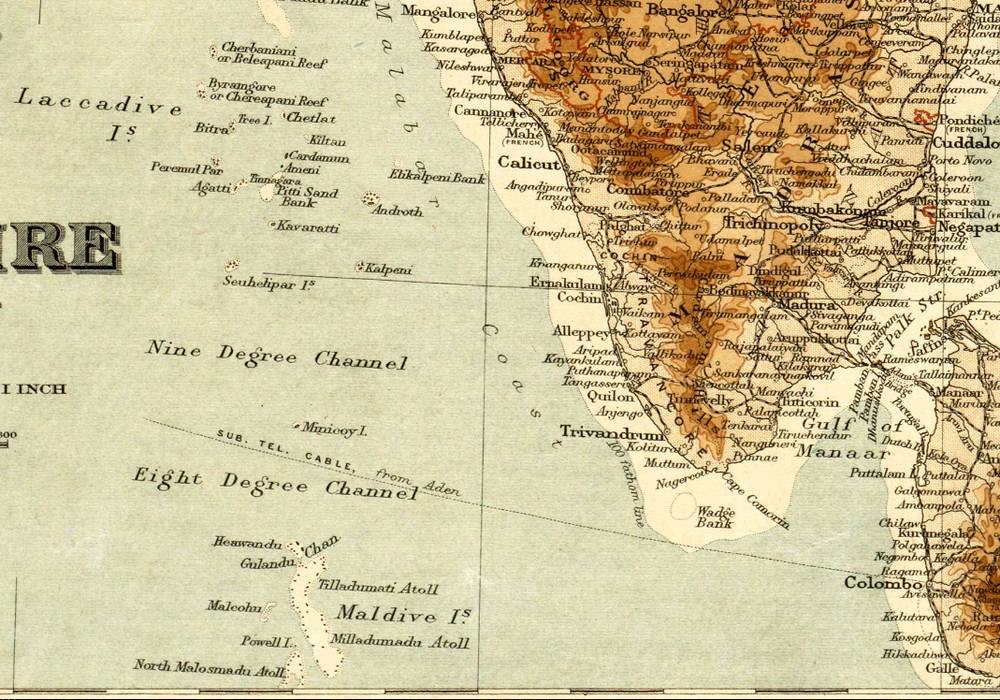Maldives History Timeline
The early history of the Maldives is enshrined in myth and legend. Archeological records indicate that the first visitors to the Maldives stepped ashore over 5000 years ago. According to folklore the Maldives was first colonized by an Indo-Aryan race between the fourth and fifth centuries B.C.

1st Century AD: Roman Navigation Manual Mentions Maldives
The Periplus Mari Erithraei, a Roman manual of navigation from the 1st century AD, provides early documentation of the Maldives. While the islands are not explicitly named, references in the manual suggest the presence of these Indian Ocean atolls.
2nd Century AD: Ptolemy’s Geographical Reference
In the 2nd century AD, the renowned Greek geographer Ptolemy included the Maldives in his influential work, Geography. This further attests to the early recognition of the archipelago as a distinct geographic entity.
362 AD: Roman Delegation and Gifts to Emperor Julian
Historical records from 362 AD recount a visit by a Maldivian delegation to Rome, bearing gifts for Emperor Julian. This interaction highlights the early engagement of the Maldives in international diplomacy and trade.
662 AD: Maldives Gifts to Chinese Emperor Kao-Tsung
During the Tang Dynasty in 662 AD, a Chinese historical document notes that the King of Maldives sent gifts to Emperor Kao-Tsung. This underscores the historical trade and cultural exchanges between the Maldives and China.
1153: Conversion to Islam
In 1153, the Maldives embraced Islam, a significant historical event that profoundly influenced the culture, traditions, and governance of the islands.
1558: Portuguese Invasion
In 1558, the Portuguese invaded the Maldives, marking the beginning of European colonial influence in the region. This period saw a struggle for control over the archipelago.
1573: Liberation by Mohamed Thakurufaanu
In 1573, Mohamed Thakurufaanu led a successful rebellion against the Portuguese, liberating the Maldives and restoring independence. Thakurufaanu is celebrated as a national hero for his role in this historic event.
1752: Malabars’ Brief Rule
In 1752, the Maldives experienced a brief period of invasion and rule by the Malabars. This episode is part of the complex historical tapestry of external influences on the Maldivian archipelago.
1887: Protectorate Agreement with Great Britain
In 1887, the Maldives entered into a protectorate agreement with Great Britain, marking a phase of British influence over the islands.
1932: Enactment of the First Constitution
In 1932, the Maldives enacted its first constitution, a pivotal moment in the country’s political development.
1953: The First Republic
The Maldives briefly became a republic in 1953, signaling an attempt at a new political era.
1954: Failure of the First Republic
However, the first republic proved short-lived, facing challenges and leading to its failure in 1954.
1965: Independence from the British
In 1965, the Maldives gained independence from British rule, establishing itself as a sovereign nation.
1968: End of Monarchy, Beginning of the Second Republic
In 1968, the Maldives transitioned from a monarchy to the Second Republic, altering its political structure.
1972: Development of First Island Resort
The tourism industry began its ascent in 1972 with the development of the Maldives’ first island resort, marking the start of the country’s emergence as a global tourist destination.
1972: Arrival of First Tourists to Island Resorts
The same year witnessed the arrival of the first tourists to these island resorts, initiating the Maldives’ journey into the global tourism market.
1980s: Tourism Boom and Economic Growth
The 1980s marked a significant period for the Maldives as the tourism industry experienced exponential growth, becoming a vital driver of economic development. The influx of international visitors contributed substantially to the country’s economic prosperity during this decade.
1982: Rejoining the British Commonwealth
In 1982, the Maldives rejoined the British Commonwealth, reinforcing diplomatic ties and international collaborations with member nations.
1988: Foiled Coup Attempt
A coup attempt in 1988 involving Sri Lankan mercenaries was thwarted with the assistance of Indian commandos. This event underscored the importance of regional cooperation and security.
2002: President Gayoom’s Environmental Warning
In 2002, President Gayoom highlighted the vulnerability of the low-lying islands to environmental threats. He called on the international community to urgently address the risks, emphasizing the need to prevent a global environmental catastrophe.
2004: Tsunami Devastation and Setback
The devastating tsunami of 2004 dealt a severe blow to the Maldives. The government declared a national disaster, stating that the catastrophic event had set back the country’s development work by an estimated 20 years. The aftermath led to extensive rebuilding efforts and a renewed focus on disaster resilience.
2008: First Multi-Party Presidential Elections
In a historic development, the Maldives held its first multi-party presidential elections in 2008. This marked a significant stride towards political pluralism and democratic governance, ending decades of single-party rule under President Maumoon Abdul Gayoom. The election resulted in Mohamed Nasheed becoming the country’s first democratically elected president.
These events collectively highlight the dynamic trajectory of the Maldives, encompassing economic growth, geopolitical shifts, environmental challenges, and the establishment of a multi-party political system, all of which have played pivotal roles in shaping the nation’s modern history.